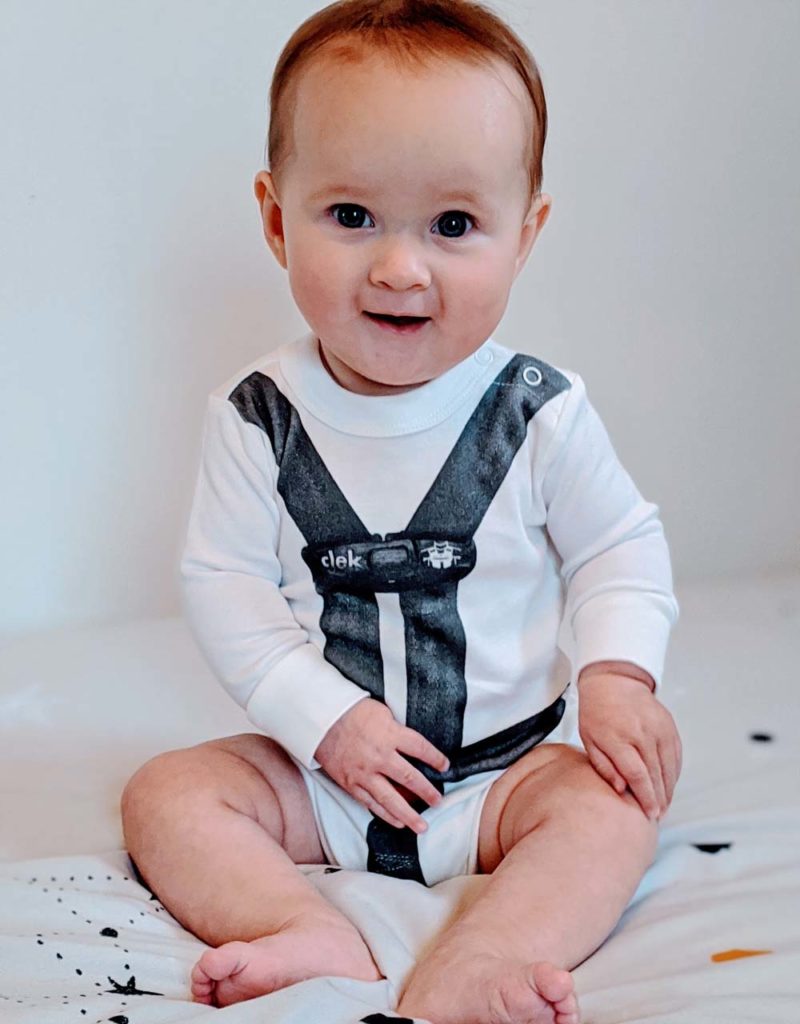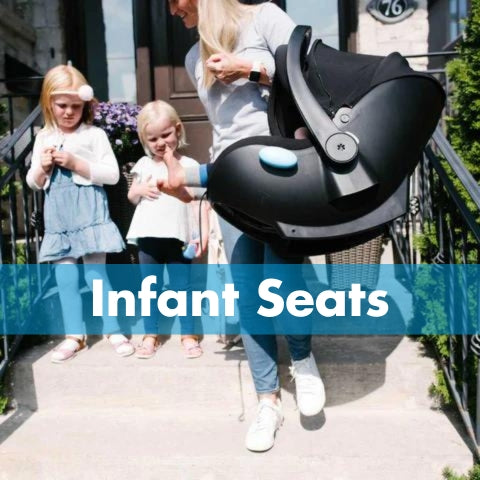Just like a seat belt is designed to keep drivers and passengers secure in the event of a collision, so too are car seat harness straps. But what about the chest clip? That little plastic doohickey must also have an important purpose, right?
Absolutely. However, it may not be exactly what you think it is. The truth is, there are many common misconceptions about the purpose of the chest clips. We're going to clear things up by addressing a few common incorrect beliefs, as well as some of the frequently asked questions we receive from confused customers.
Did You Know?
Chest clips are NOT required by federal child passenger safety seat standards.
The chest clip will hold my baby in their car seat in a crash.
Nope.
It might look like the chest clip is strong enough to hold your baby in a collision, but that’s simply not the case. Think about it: is such a small plastic clip really designed to absorb crash forces? What may be even more surprising to learn is that it’s actually expected that the chest clip will slide down and/or come open in a crash.
As we touched on in the very first sentence of this article, it’s the harness that does the heavy lifting here. When properly buckled into the crotch strap and properly tightened, the harness will ensure your child remains as safe as possible and help appropriately distribute the crash forces throughout the car seat to minimize any transference to your child.
So, what role does the chest clip play in all this? Though the straps are doing the brunt of the work, that doesn’t mean the chest clip is insignificant. It is a pre-crash tensioner meant to help position the harness straps properly on a child’s shoulders. Think of it like the harness’s helpful assistant there to keep things in line!
As long as the chest clip is done up, its position doesn’t really matter.
Not quite.
The harness straps are naturally closer together at the crotch buckle and positioned farther apart around the shoulders where the harness straps feed into the back of the car seat. Since that’s the case, it’s important that the chest clip be properly positioned at the armpits to help ensure proper harness positioning.
When the chest clip is correctly positioned at armpit height, it pulls the harness straps inwards to help make sure that the harness is properly aligned with a child’s shoulders. This detail becomes especially important in the event the harness is too loose!
Why does Clek promote and advocate that the chest clip be at armpit level if it’s not holding the child in?
Simple. It’s because:
- A chest clip too low may mean that the harness could slide off the shoulders and lead to ejection in a sudden stop or collision.
- A chest clip too high may mean injury to the child’s neck in a sudden stop or collision.
If they’re not required, how come there aren’t really any seats without a chest clip?
Believe or not, they do exist! Despite chest clips not being mandated, including once has become such common practice that almost all North American car seat manufacturers include one and recommend its use. As jarring as it may be to find out that your kiddo’s car seat is chest clip-free, that doesn’t mean it’s unsafe!
For instance, European car seats don’t feature a chest clip at all. That’s because their standards stipulate that child restraints must be able to be released single-handedly, rendering a chest clip essentially unusable.
Simply put, if your seat includes a chest clip, use it! Just because it’s not required by law doesn’t mean that you should ignore it. If there is no clip, then simply follow whatever recommendations are provided to ensure your child is safely buckled in.
What’s the best way to properly position and utilize my seat’s chest clip?
Each of our harnessed car seats feature a handy icon on the chest clip to remind you of correct position – armpit level:

How’s that for foolproof? Continue reading for an even easier way to stay in the know!
Keep in mind that for smaller newborns, it’s recommended to line up the top edge of the chest clip with baby’s armpits. You’ll know you are at the right height when you can place the edge of your finger on the end of the chest clip and touch your little one’s armpit.
Though it might seem counterintuitive, make sure to adjust the chest clip after you have pulled the harness tight. That’s because the clip will move up or down as you adjust the straps, so you’ll have to reposition it regardless once the harness is correctly tightened.
If you do position the chest clip before adjusting the harness, you may also notice that the straps appear to be tight, but it’s likely not the case! Chances are that moving the clip up just helped to remove slack from the top of the straps, while there’s still plenty of slack around the bottom.
Here are handy videos that demonstrate the best way to adjust the harness and chest clip on your little one:
Securing an Infant in a Clek Infant Car Seat
Securing a Child in a Clek Convertible Car Seat (Rear-Facing)
Securing a Child in a Clek Convertible Car Seat (Forward-Facing)
Teamwork Makes the Dream Work!
Last but not least, remember that while properly positioning the clip and adjusting the harness will go a long way in helping keep your most precious cargo safe on the road, it’s equally important to make sure that the straps themselves are correctly installed for your little one. Here’s a quick refresher:
REAR-FACING
- Straps installed in the harness slots at or below and closest to the child’s shoulders.
FORWARD-FACING
- Straps installed in the harness slots at or above and closest to the child’s shoulders.

The Perfect Accessory for New Parents!
Looking for an even easier way to remind yourself how to position the chest clip and harness? We got you covered!
Considering proper chest clip positioning is crucial for keeping kids safe and secure in their car seats, we decided to help spread the word in a whole new way: with a luxuriously soft onesie!
Made with a breathable, naturally anti-microbial, sustainable fabric, every inch of our organic onesie is thoughtfully designed with functional features like a bum flap for easy diaper checks and two snaps at the neck for easy changing.




